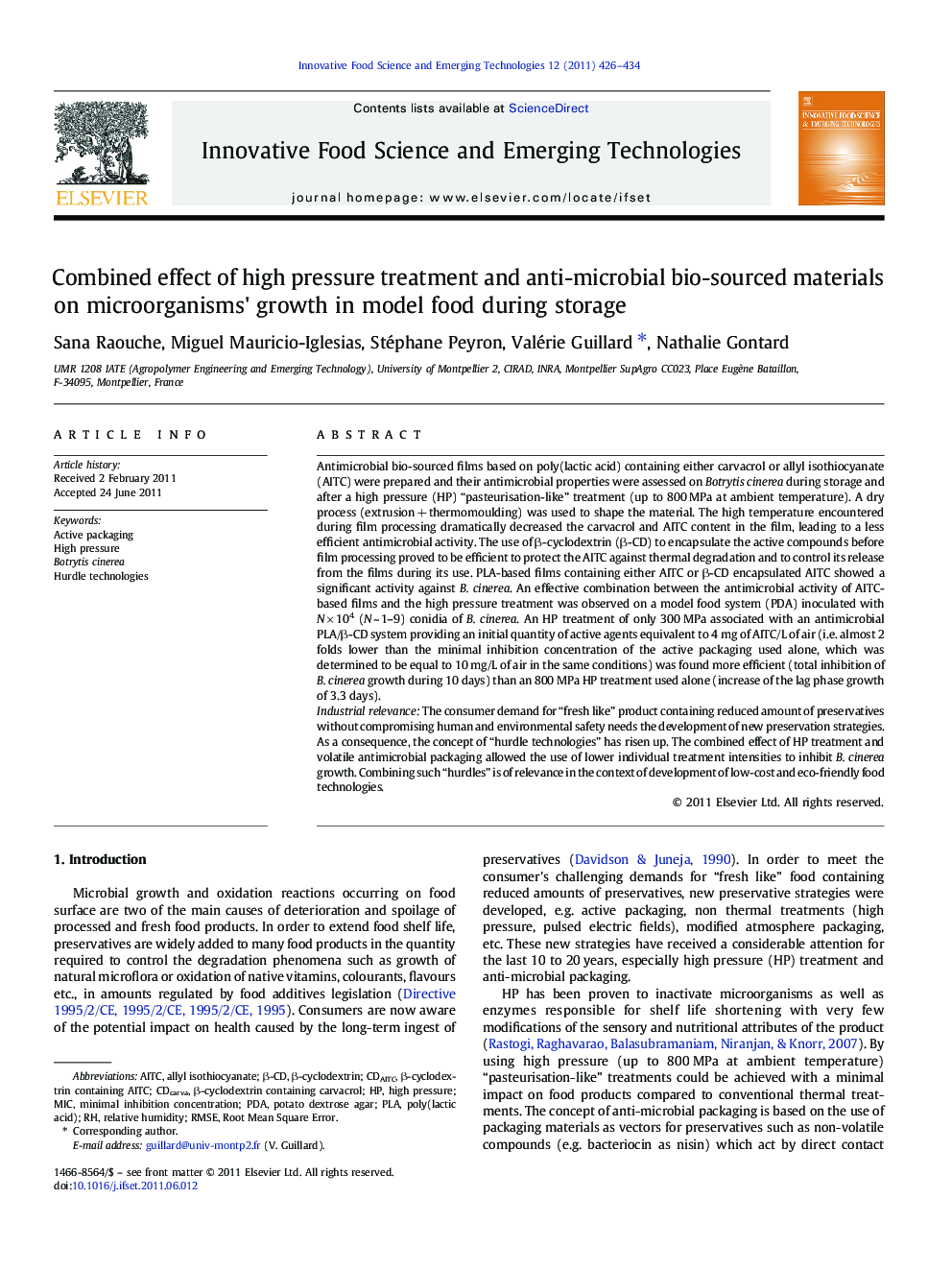| Article ID | Journal | Published Year | Pages | File Type |
|---|---|---|---|---|
| 2087014 | Innovative Food Science & Emerging Technologies | 2011 | 9 Pages |
Antimicrobial bio-sourced films based on poly(lactic acid) containing either carvacrol or allyl isothiocyanate (AITC) were prepared and their antimicrobial properties were assessed on Botrytis cinerea during storage and after a high pressure (HP) “pasteurisation-like” treatment (up to 800 MPa at ambient temperature). A dry process (extrusion + thermomoulding) was used to shape the material. The high temperature encountered during film processing dramatically decreased the carvacrol and AITC content in the film, leading to a less efficient antimicrobial activity. The use of β-cyclodextrin (β-CD) to encapsulate the active compounds before film processing proved to be efficient to protect the AITC against thermal degradation and to control its release from the films during its use. PLA-based films containing either AITC or β-CD encapsulated AITC showed a significant activity against B. cinerea. An effective combination between the antimicrobial activity of AITC-based films and the high pressure treatment was observed on a model food system (PDA) inoculated with N × 104 (N ~ 1–9) conidia of B. cinerea. An HP treatment of only 300 MPa associated with an antimicrobial PLA/β-CD system providing an initial quantity of active agents equivalent to 4 mg of AITC/L of air (i.e. almost 2 folds lower than the minimal inhibition concentration of the active packaging used alone, which was determined to be equal to 10 mg/L of air in the same conditions) was found more efficient (total inhibition of B. cinerea growth during 10 days) than an 800 MPa HP treatment used alone (increase of the lag phase growth of 3.3 days).Industrial relevanceThe consumer demand for “fresh like” product containing reduced amount of preservatives without compromising human and environmental safety needs the development of new preservation strategies. As a consequence, the concept of “hurdle technologies” has risen up. The combined effect of HP treatment and volatile antimicrobial packaging allowed the use of lower individual treatment intensities to inhibit B. cinerea growth. Combining such “hurdles” is of relevance in the context of development of low-cost and eco-friendly food technologies.
► PLA-based film containing carvacrol was not efficient against B. cinerea growth. ► PLA-based film containing AITC was efficient against B. cinerea growth. ► Active packaging combined with HP treatment was effective against B. cinerea growth.
